

-Both COVID-19 cases and related deaths numbers in the United States account for roughly one fifth of the global totals, while the U.S. population is equivalent to less than 5 percent of the world's population.
-The White House has sought to deflect blame by engaging in wars of words with state officials and reshaping narratives of its response to the pandemic.
-Robert Redfield, director of the CDC, said that a vaccine probably wouldn't be widely available to the American public until "late second quarter, third quarter 2021."
WASHINGTON, Sept. 22 (Xinhua) -- The United States hit another grim milestone on Tuesday, becoming the first in the world to have reported more than 200,000 COVID-19 deaths.
As people across the country are mourning the losses, health experts have criticized the federal government's handling of the pandemic and urged officials to reflect on the failures as new challenges are ahead in fall and winter and the timetable for a coronavirus vaccine remains unclear.
RESPONSE UNDER CRITICISM
There have been 200,005 coronavirus deaths as of Tuesday noon, while the number of infections has exceeded 6.8 million, according to a tally by Johns Hopkins University. Both numbers account for roughly one fifth of the global totals, while the U.S. population is equivalent to less than 5 percent of the world's population.
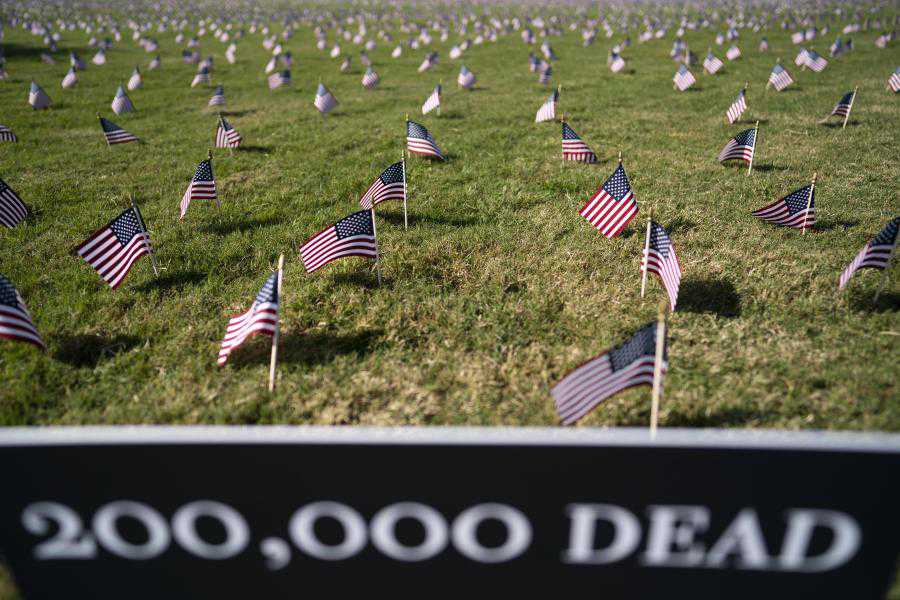
U.S. national flags representing the 200,000 lives lost to COVID-19 in the United States are placed on the National Mall in Washington, D.C., the United States, on Sept. 22, 2020. (Xinhua/Liu Jie)
"The idea of 200,000 deaths is really very sobering and in some respects, stunning," Anthony Fauci, director of the U.S. National Institute of Allergy and Infectious Diseases, told a virtual conference hosted by CNN on Tuesday.
Fauci, the country's leading infectious diseases expert and a member of the White House coronavirus task force, refused to grade how the United States has handled the pandemic but said instead the numbers speak for themselves. "Take a look at the numbers and make up your own mind," he said. "We don't need a soundbite from me. Take a look at the numbers."
Now the largest epicenter of the public health crisis, the United States was not the first to have an outbreak. U.S. health authorities reported the first coronavirus case on Jan. 20 and the first death in late February.
However, for weeks and even months, top government officials had tried to play down the threat of the virus to the U.S. pubic and thus wasted valuable time for preparation and mobilization despite early and repeated warnings from the international community and health pundits.
"This didn't have to happen. Tens of thousands of deaths could have been prevented," tweeted Tom Frieden, former director of the U.S. Centers for Disease Control and Prevention (CDC).
After a wider outbreak, the U.S. federal government took a series of measures against the spread of the coronavirus but met with criticism for being late or not strong enough. Its messaging on the pandemic had largely been dominated by politicians rather than scientists whom polls have showed Americans appear to trust more. For example, the White House didn't endorse the use of masks against coronavirus until July, a measure that experts have agreed could help reduce infections and save more lives.
At times, the White House had tried to sideline or undercut its officials and scientists inclined to talk bluntly about the pandemic, while putting political pressure on health agencies and even interfered with their work, creating confusion and damaging public trust.
"Unfortunately we've seen scientists, public health officials and our government science agencies can be badly undermined," tweeted Tom Inglesby, director of the Center for Health Security at the Johns Hopkins Bloomberg School of Public Health. "We've witnessed scientific recommendations get changed by a political process."
Meanwhile, the White House has sought to deflect blame by engaging in wars of words with state officials and reshaping narratives of its response to the pandemic. That blame-shifting game has even gone beyond the borders. In July, the United States officially notified the World Health Organization (WHO) of its withdrawal from the specialized UN agency, a roundly criticized move that has put the global fight against the pandemic in danger.
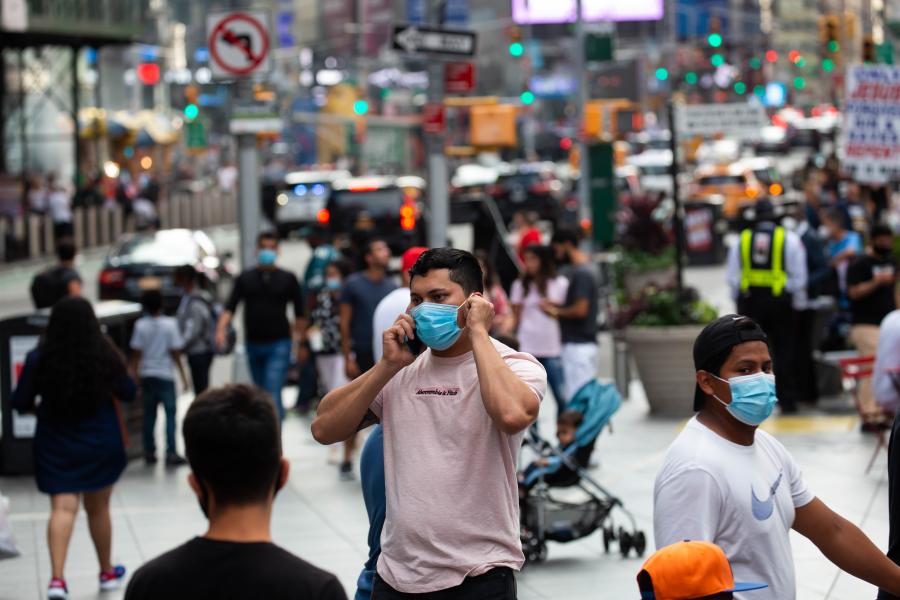
People walk in Times Square during the COVID-19 pandemic in New York, the United States, Sept. 13, 2020. (Photo by Michael Nagle/Xinhua)
According to a new 13-nation Pew Research Center survey, a median of just 15 percent say the United States has done a good job of dealing with the outbreak. In contrast, most have positive views on the WHO's response, and in nearly all nations, people give their own country positive marks for handling the crisis, with the United States being a notable exception.
NEW CHALLENGES AHEAD
After peaks in summer that saw daily coronavirus cases as high as more than 70,000 in the United States, the number of new infections a day has overall been on the decline, but in the past week there were still at least 33,000 diagnoses and hundreds of deaths in a single day. Several Midwestern states have recently reported record numbers of single day infections.
"We're all sick and tired of the pandemic, but unfortunately Covid is not tired of making us sick. It's still out there -- lots of people are infectious and the virus remains deadly," Frieden tweeted earlier. "We're not out of the woods. Another 100,000 people could die by the end of the year unless we improve our response."
Leana Wen, visiting professor of health policy and management at the George Washington University's Milken Institute School of Public Health, urged people not to let down their guard, tweeting that "the same public health measures we've discussed all along are still our best protection."
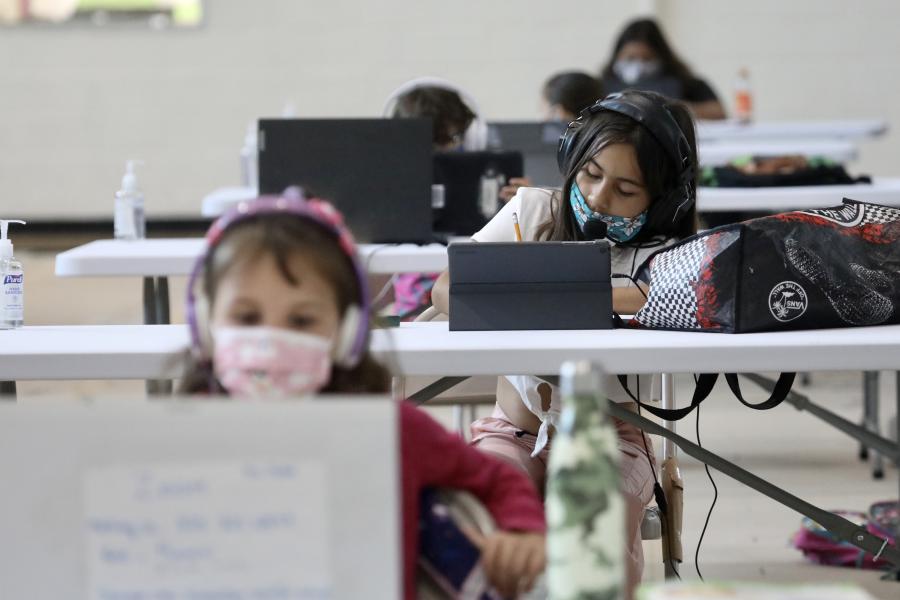
Students study online at a recreation center in Los Angeles, the United States, on Sept. 3, 2020. (Xinhua)
While most students are attending classes virtually this fall, others in some parts of the United States are returning to school. News of coronavirus clusters turning up on campuses has recently broken out one after another, frustrating local efforts to flatten the curve and dampening progress on reopening the economy and communities.
"The back-to-school season has brought new infections in colleges and universities nationwide. COVID-19 cases in students and children will continue to rise," Stanley Perlman, professor of microbiology and immunology at the University of Iowa, told Xinhua.
More than 150 colleges and universities in the United States have reported at least 100 coronavirus cases over the course of the pandemic, including dozens that have seen spikes in recent weeks, according to a survey conducted by The New York Times.
A total of 587,948 children in the country tested positive for the disease as of Sept. 17, the American Academy of Pediatrics and Children's Hospital Association said in a report released Monday, adding that 74,553 new child cases were reported from Sept. 3 through Sept. 17, a 15-percent increase over two weeks.
Experts also noted that the overlap of the coronavirus pandemic and the flu season, which started in fall, could strain health care capacity, making upcoming months very challenging.
"Because of the COVID-19 pandemic, reducing the spread of respiratory illnesses, like flu, this fall and winter is more important than ever," the U.S. CDC said on its website. "CDC recommends getting a flu vaccination in September or October but getting vaccinated anytime during the flu season can help protect you."
Ali Nouri, a molecular biologist and president of the Federation of American Scientists, a policy think tank dedicated to addressing pandemics and other global risks, tweeted that "everyone needs to have a plan and prepare for the winter months." "Without precautions, spending more time indoors, often in crowded and poorly ventilated spaces, will exacerbate the pandemic," he warned.
VACCINE TIMETABLE UNCLEAR
Perlman said he thinks "the numbers of cases may surge in fall and winter" in the United States but hopes that "with appropriate measures and perhaps a vaccine, the surge will be less than we fear." However, the timetable for a COVID-19 vaccine remains unclear and has been confusing.
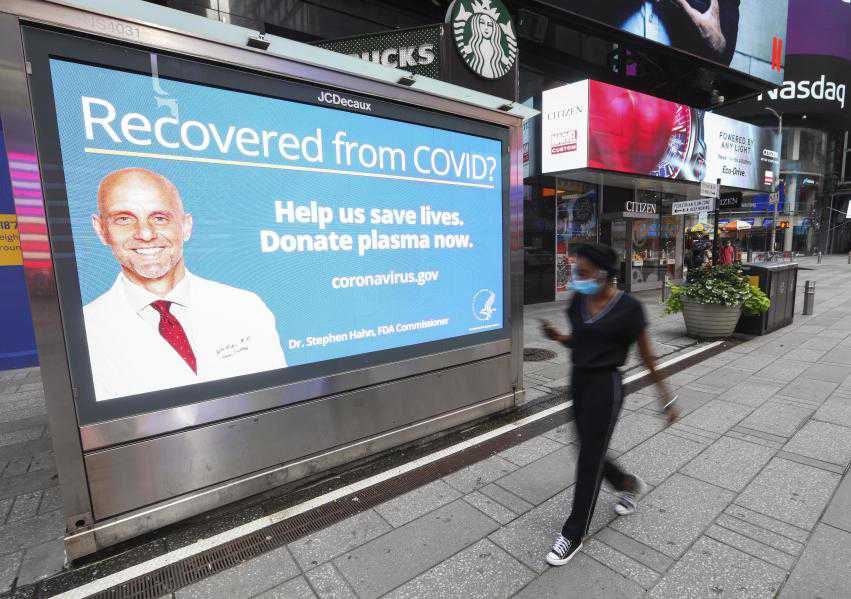
An electronic screen shows an advertisement calling for plasma donation from patients recovered from COVID-19 on Times Square in New York, the United States, Aug. 19, 2020. (Xinhua/Wang Ying)
U.S. President Donald Trump, who is seeking reelection this year, has been pushing for the distribution of vaccines before the Election Day in early November, as the pandemic is a key campaign topic and criticism of his administration's response has put a drag on the prospects of the Republican's second term.
Earlier this month, the U.S. CDC asked state officials to prepare for vaccine distribution for high-priority groups as early as Nov. 1. Moncef Slaoui, scientific head of Operation Warp Speed, a White House program designed to shorten the amount of time it takes to develop a coronavirus vaccine, has said that it is "possible but very unlikely" that a vaccine will be ready to distribute by then.
During a hearing with a Senate subcommittee last week, Robert Redfield, director of the CDC, said that a vaccine probably wouldn't be widely available to the American public until "late second quarter, third quarter 2021."
Several vaccines are currently in trials.
Trump has rejected Redfield's remarks, calling them "incorrect information." "I think he made a mistake when he said that," Trump told reporters last week. "I called him and he didn't tell me that. I think he got the message maybe confused, maybe it was stated incorrectly."
Fauci said on Tuesday that "people can have projections of what they think might happen" but no one really knows when a vaccine will be ready.
"The system is a double-blind, placebo controlled system -- which means that there's an independent data and safety monitoring board that has nothing to do with politics or politicians, that has nothing to do essentially with the company, or the FDA (Food and Drug Administration), or the people who are doing the trial," he explained. "Nobody knows what those data are because no one has looked at them. They are blinded."
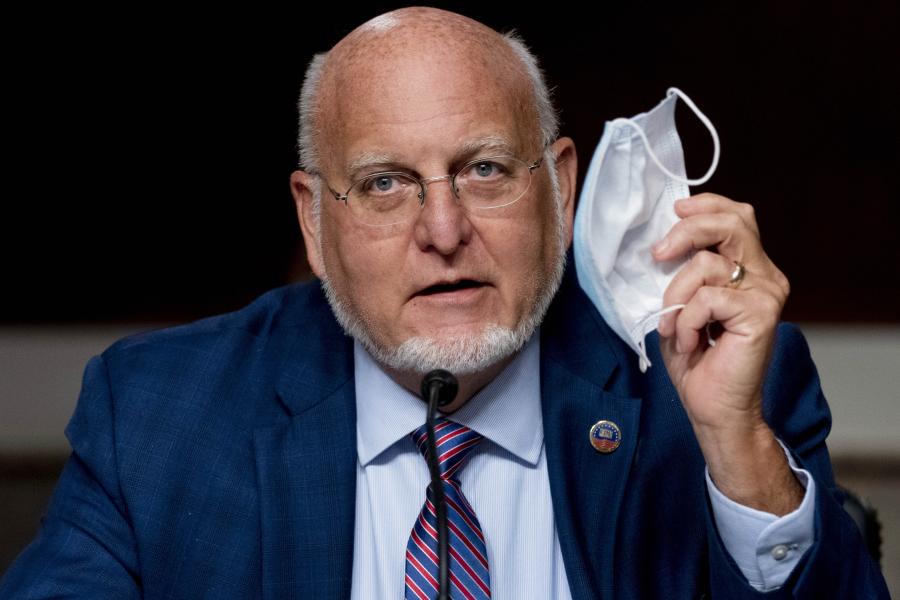
Director of the U.S. Centers for Disease Control and Prevention (CDC) Robert Redfield attends a Senate Appropriations subcommittee hearing on "Review of Coronavirus Response Efforts" on Capitol Hill in Washington, D.C., the United States, on Sept. 16, 2020. (Andrew Harnik/Pool via Xinhua)
It is also not sure how effective a COVID-19 vaccine will ultimately be. The U.S. FDA said in June that it would authorize a vaccine if it was safe and at least 50 percent effective in preventing the disease or decreasing the severity of infections. Fauci has previously acknowledged that chances of scientists creating a highly effective vaccine are "not great."
Lawrence Gostin, professor of global health law and director of the O'Neill Institute for National and Global Health Law at Georgetown University, tweeted that "so much can go wrong" with COVID-19 vaccines, including the FDA approval, adequate supplies, equitable distribution, and vaccine hesitancy, as well as "concerns about liability and fair compensation for vaccine injuries."

 Award-winning photos show poverty reduction achievements in NE China's Jilin province
Award-winning photos show poverty reduction achievements in NE China's Jilin province People dance to greet advent of New Year in Ameiqituo Town, Guizhou
People dance to greet advent of New Year in Ameiqituo Town, Guizhou Fire brigade in Shanghai holds group wedding
Fire brigade in Shanghai holds group wedding Tourists enjoy ice sculptures in Datan Town, north China
Tourists enjoy ice sculptures in Datan Town, north China Sunset scenery of Dayan Pagoda in Xi'an
Sunset scenery of Dayan Pagoda in Xi'an Tourists have fun at scenic spot in Nanlong Town, NW China
Tourists have fun at scenic spot in Nanlong Town, NW China Harbin attracts tourists by making best use of ice in winter
Harbin attracts tourists by making best use of ice in winter In pics: FIS Alpine Ski Women's World Cup Slalom
In pics: FIS Alpine Ski Women's World Cup Slalom Black-necked cranes rest at reservoir in Lhunzhub County, Lhasa
Black-necked cranes rest at reservoir in Lhunzhub County, Lhasa China's FAST telescope will be available to foreign scientists in April
China's FAST telescope will be available to foreign scientists in April